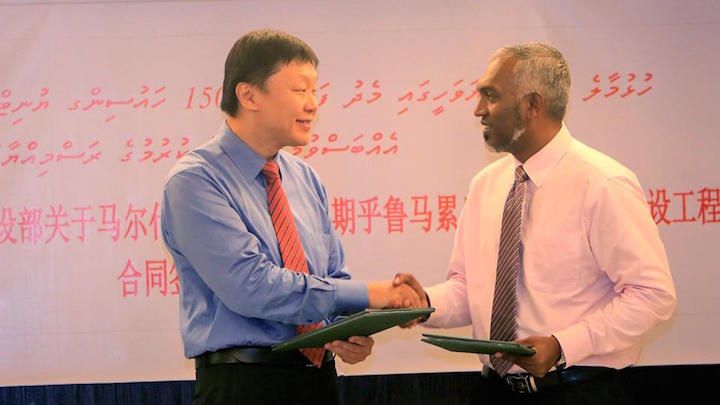Chinese company to construct 1,500 flats in Hulhumalé
The ministry of housing and infrastructure signed a contract with the China Machinery Engineering Corporation (CMEC) today for the construction of 1,500 medium-end housing units in the capital’s suburb Hulhumalé.

09 Nov 2015, 9:00 AM
The ministry of housing and infrastructure signed a contract with the China Machinery Engineering Corporation (CMEC) today for the construction of 1,500 medium-end housing units in the capital’s suburb Hulhumalé.
“Work on these housing units will begin next year and people can live there by April 2018,” Housing Minister Dr Mohamed Muiz said at today’s contract signing ceremony.
The housing ministry did not reveal the cost of the project.
Shi Jintao, CMEC’s general manager, signed the contract on behalf of the company. CMEC had also built 1,000 units in Hulhumalé under phase one.
Become a member
Get full access to our archive and personalise your experience.
Already a member?
Discussion
No comments yet. Be the first to share your thoughts!
No comments yet. Be the first to join the conversation!
Join the Conversation
Sign in to share your thoughts under an alias and take part in the discussion. Independent journalism thrives on open, respectful debate — your voice matters.




